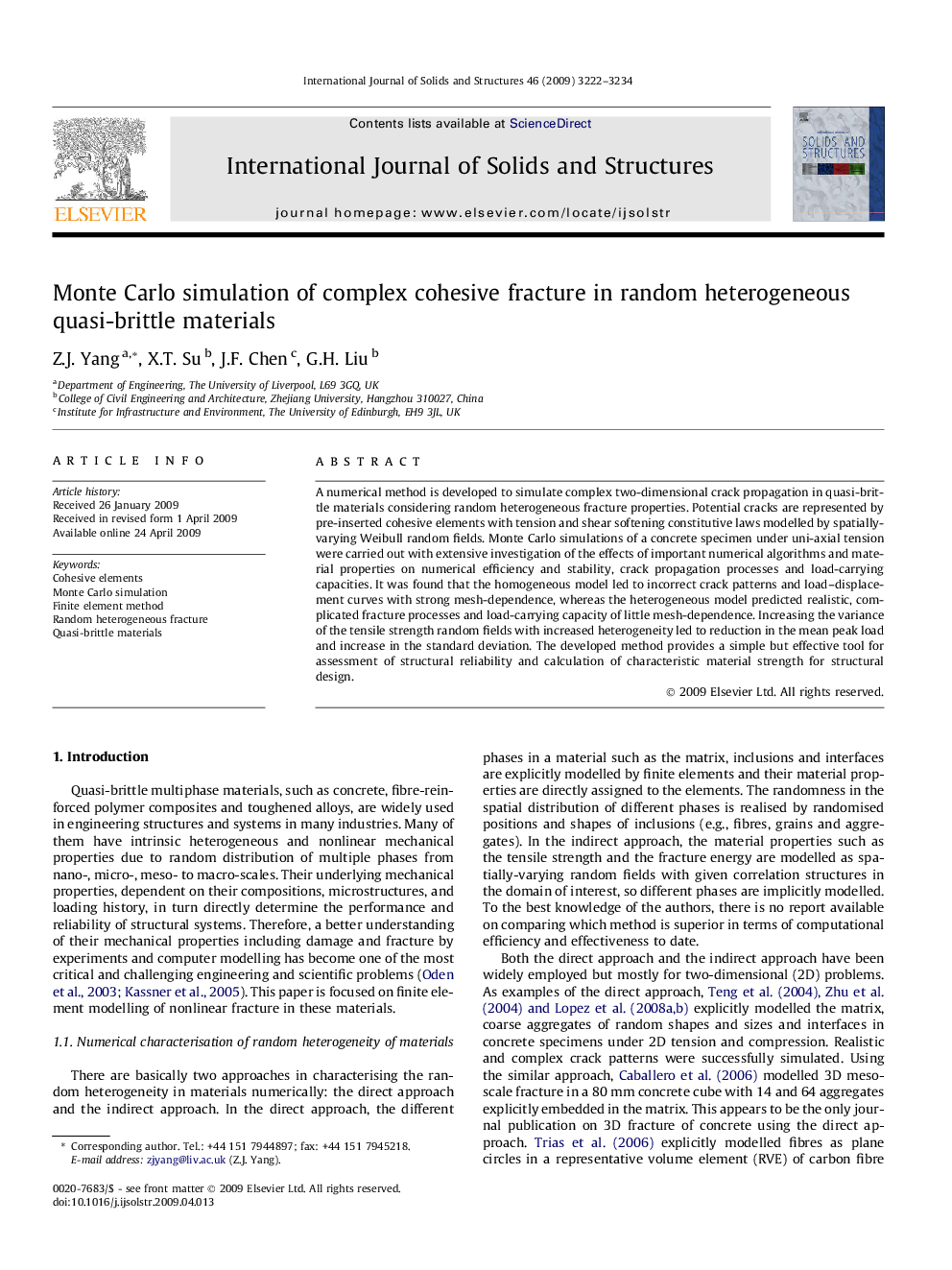| Article ID | Journal | Published Year | Pages | File Type |
|---|---|---|---|---|
| 279093 | International Journal of Solids and Structures | 2009 | 13 Pages |
A numerical method is developed to simulate complex two-dimensional crack propagation in quasi-brittle materials considering random heterogeneous fracture properties. Potential cracks are represented by pre-inserted cohesive elements with tension and shear softening constitutive laws modelled by spatially-varying Weibull random fields. Monte Carlo simulations of a concrete specimen under uni-axial tension were carried out with extensive investigation of the effects of important numerical algorithms and material properties on numerical efficiency and stability, crack propagation processes and load-carrying capacities. It was found that the homogeneous model led to incorrect crack patterns and load–displacement curves with strong mesh-dependence, whereas the heterogeneous model predicted realistic, complicated fracture processes and load-carrying capacity of little mesh-dependence. Increasing the variance of the tensile strength random fields with increased heterogeneity led to reduction in the mean peak load and increase in the standard deviation. The developed method provides a simple but effective tool for assessment of structural reliability and calculation of characteristic material strength for structural design.
